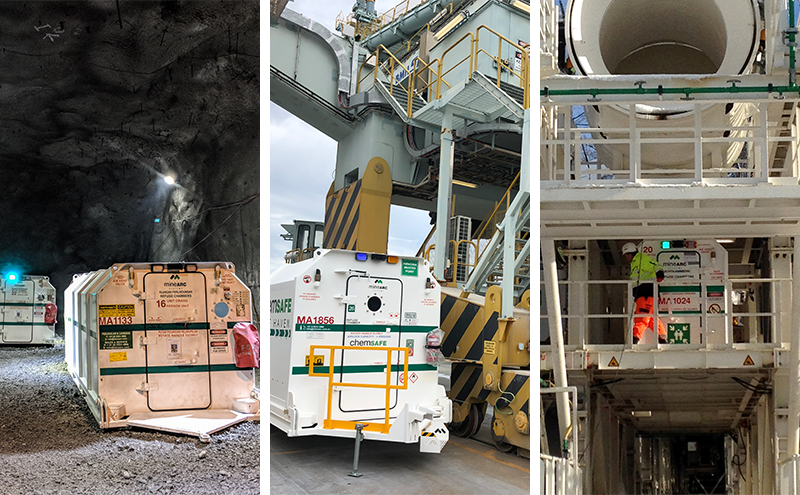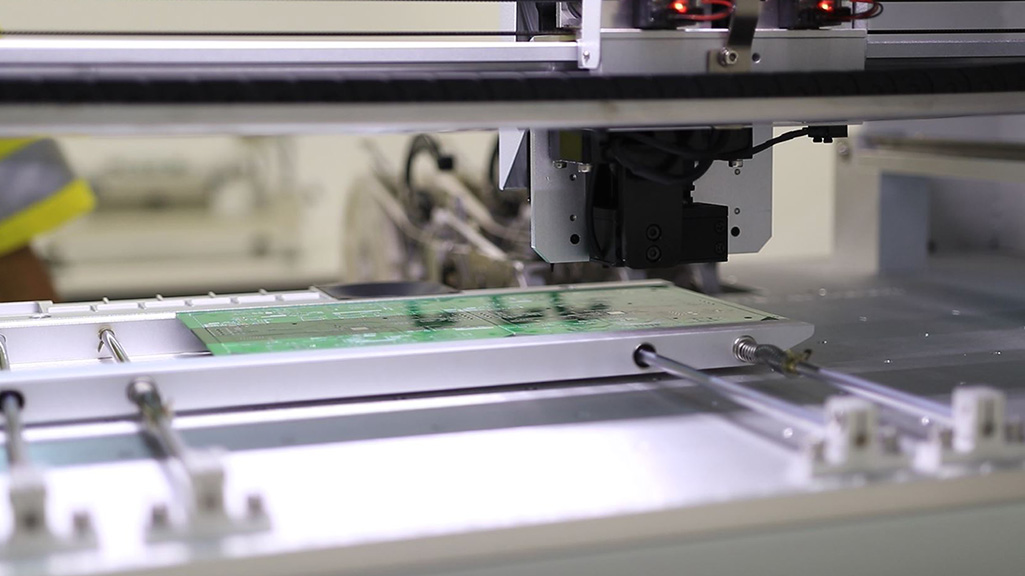What does a refuge chamber contain, and why are they required?
A refuge chamber is a sealed environment built to sustain life during an emergency or hazardous situation. They provide a secure area with shelter, water, and breathable air, where personnel can remain until rescued or the hazard subsides.
Refuge chambers have a closed-circuit breathing apparatus within a sealed container. Carbon dioxide and other toxins are removed, oxygen is added, and temperature and humidity are maintained while protecting occupants from external threats.
What is a Refuge Chamber?
Refuge chambers can go by other names, such as refuge station or refuge bay. Terminology primarily depends on industry or region; for example, it is a safe haven in the petrochemical industry or refuge alternative in the coal industry. However, the overarching purpose of these shelters remains the same.
What Equipment is in a Refuge Station?
There are several vital components which make up what a refuge chamber is. Without these, in an emergency, the shelter may not meet its life-saving requirements.
Multiple Sources of Breathable Air
Breathable air merely is the air that can support life, has enough oxygen in its mix, and doesn’t contain contaminants like carbon monoxide, carbon dioxide, water, or any other toxins that will poison refuge chamber occupants during entrapment.
Multiple breathable air sources within their refuge chambers help to accommodate a range of situations.
A Habitable Environment
Occupants can remain in a refuge chamber for an unknown amount of time. The environment mustn’t hinder their chance of surviving the emergency during their entrapment. Adequate space is necessary for the life-supporting mechanism to operate; along with water and nutrients.
Cooling is one of the most critical features of a refuge. Heat can quickly accumulate inside a refuge chamber, increasing with each additional person. It is often underestimated; with cooling systems perceived as a luxury rather than an essential part of life-sustaining safe refuge technology.
Backup Power Supply
Every refuge chamber requires an emergency power source to maintain the life-sustaining equipment if mains power fails. This scenario is called the stand-alone mode.
Various industry guidelines set the duration of these systems. For example, hard rock mining is 36 hours based on recovery periods after a truck fire; coal mining extends to 96 hours. Safe havens for petrochemical sites may only require a few hours duration based on the type of facility.
Why is a Refuge Chamber Needed?
The purpose of a refuge station is to keep people safe.
In industries such as mining, underground construction, and chemical manufacturing, there is a higher risk for the atmosphere to become contaminated and unsafe. Fires, explosions, rock-falls, flooding and the release of toxic gases are just some of the types of incidents that occur all too often, despite planning and safety precautions.
In these incidents, it is essential to provide a safe location for staff to escape when exiting the area is no longer an option.
Why? Although personnel may survive an immediate accident, the air can often become soiled with pollutants, smokes, and toxins deeming it unbreathable. Smoke may be too thick for those underground to see, or the path may be blocked, these are several reasons to use a shelter.
Refuge chambers will help sustain the life of personnel in an area while they wait to be rescued; providing a breathable supply of air, water and communications to the surface – ultimately saving lives.
How does a Refuge Chamber fit into a Safety and Emergency Response Plan?
Emergency refuge forms an integral part of a site’s broader Emergency Response Plan (ERP).
In emergencies, when evacuation is no longer safe or practical, the emergency refuge is designed to provide a safe and secure ‘go-to’ area for personnel to gather and await extraction.
Government regulations across many parts of the world have incorporated refuge chambers as a critical component of site planning. However, chamber installation is just the beginning. Beyond chamber placement, training is a crucial aspect of a site’s ERP. If employees understand and are familiar with when and how to accurately use a chamber, the chances of survival are significantly improved.
Every site is different – whether it is an underground mine, petrochemical facility or transport tunnel; and this affects the style of refuge chamber required. MineARC Systems specialise in designing and custom building refuge chambers for the safe retreat of personnel.
Safety drives productivity; it involves a collective effort, but management must be the lead. A management-led program to enhance workplace OH&S instils a positive and well-respected safety culture within the organisation.







